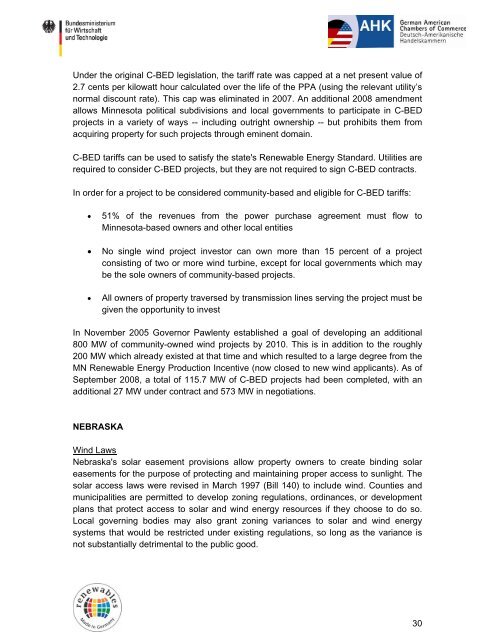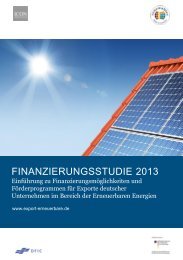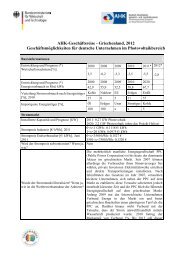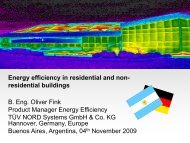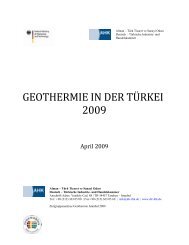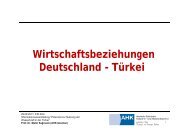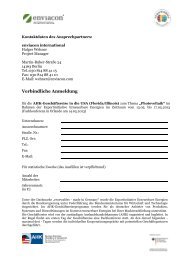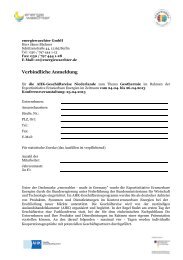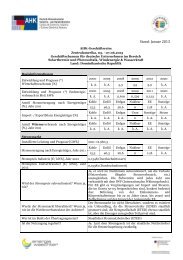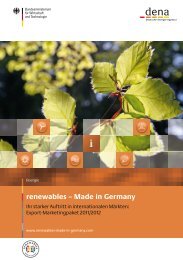PDF: 1,1 MB - Exportinitiative Erneuerbare Energien
PDF: 1,1 MB - Exportinitiative Erneuerbare Energien
PDF: 1,1 MB - Exportinitiative Erneuerbare Energien
- No tags were found...
You also want an ePaper? Increase the reach of your titles
YUMPU automatically turns print PDFs into web optimized ePapers that Google loves.
Under the original C-BED legislation, the tariff rate was capped at a net present value of<br />
2.7 cents per kilowatt hour calculated over the life of the PPA (using the relevant utility’s<br />
normal discount rate). This cap was eliminated in 2007. An additional 2008 amendment<br />
allows Minnesota political subdivisions and local governments to participate in C-BED<br />
projects in a variety of ways -- including outright ownership -- but prohibits them from<br />
acquiring property for such projects through eminent domain.<br />
C-BED tariffs can be used to satisfy the state's Renewable Energy Standard. Utilities are<br />
required to consider C-BED projects, but they are not required to sign C-BED contracts.<br />
In order for a project to be considered community-based and eligible for C-BED tariffs:<br />
51% of the revenues from the power purchase agreement must flow to<br />
Minnesota-based owners and other local entities<br />
No single wind project investor can own more than 15 percent of a project<br />
consisting of two or more wind turbine, except for local governments which may<br />
be the sole owners of community-based projects.<br />
All owners of property traversed by transmission lines serving the project must be<br />
given the opportunity to invest<br />
In November 2005 Governor Pawlenty established a goal of developing an additional<br />
800 MW of community-owned wind projects by 2010. This is in addition to the roughly<br />
200 MW which already existed at that time and which resulted to a large degree from the<br />
MN Renewable Energy Production Incentive (now closed to new wind applicants). As of<br />
September 2008, a total of 115.7 MW of C-BED projects had been completed, with an<br />
additional 27 MW under contract and 573 MW in negotiations.<br />
NEBRASKA<br />
Wind Laws<br />
Nebraska's solar easement provisions allow property owners to create binding solar<br />
easements for the purpose of protecting and maintaining proper access to sunlight. The<br />
solar access laws were revised in March 1997 (Bill 140) to include wind. Counties and<br />
municipalities are permitted to develop zoning regulations, ordinances, or development<br />
plans that protect access to solar and wind energy resources if they choose to do so.<br />
Local governing bodies may also grant zoning variances to solar and wind energy<br />
systems that would be restricted under existing regulations, so long as the variance is<br />
not substantially detrimental to the public good.<br />
30


